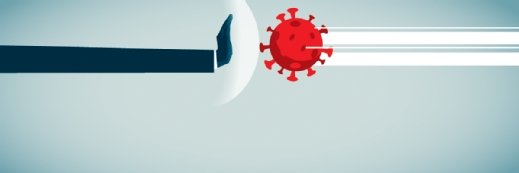
BAIVECTOR - stock.adobe.com
Cancer screening rates, preventive care access sink to 51%
Better public awareness and patient education campaigns are necessary for improving the nation's abysmal cancer screening rates.
Only half of Americans are getting regular cancer screenings and routine medical care, signaling a need for more public awareness of the importance of primary and preventive care, according to the Prevent Cancer Foundation's 2025 Early Detection Survey.
The survey of 7,000 U.S. adults aged 21 or older showed that only 51% of people are accessing routine medical care and cancer screening, a significant 10 percentage-point downswing from a similar 2024 survey.
There are numerous reasons patients miss their cancer screenings, but most generally center on public awareness and information, the survey continued. For example, 43% of respondents said they weren't aware that they needed to be screened for a certain type of cancer. Likewise, 40% said they didn't have any symptoms of disease and another 40% said they had no family history of the illness.
Public awareness, patient education support cancer screening
These flagging cancer screening rates signal a need for better patient education on the matter, according to the Prevent Cancer Foundation.
Take breast cancer screenings and mammograms as an example.
The survey showed that 65% of women over age 40 had gotten their routine mammogram. That figure dwarfs cancer screening rates for other disease types; only 32% of men are up-to-date on their testicular cancer screenings, and only 36% of adults said they are up-to-date on skin cancer checks.
According to Jody Hoyos, the CEO of the Prevent Cancer Foundation, the higher rates of breast cancer screening are likely the result of effective public health awareness campaigns. After all, a sizeable two-thirds of respondents said they'd at least heard of some awareness campaigns, such as Breast Cancer Awareness month.
"The success of educational campaigns and hard work of patient advocacy organizations seems to have broken through the noise and made a difference in breast cancer screening rates," Hoyos said in a press release.
Still, there is work to be done to improve breast cancer screening rates, as well as screening rates for other types of cancer, she continued.
"But 65% of eligible people being screened for breast cancer is still not enough -- we have a lot of work to do to increase screening rates for better health outcomes," Hoyos stressed. "And for other cancer types, it’s an even taller order. We need to shine a light on the importance of all routine cancer screenings, so everyone has the best chance for a healthy future."
Strategies for boosting cancer screening rates
Public education campaigns are among the most important steps for improving cancer screening rates, the survey data indicated, with patients being 73% more likely to get a routine screening when they learn the benefits.
But there are other key strategies necessary for improving screening rates, the data furthered.
For example, offering more screening modalities could make cancer screening more convenient. Around 4 in 10 (42%) of respondents said they'd complete a routine cancer screening if an at-home test was made available to them.
Another 32% of patients said they'd get a cancer screening if they were more affordable. Notably, the Affordable Care Act (ACA) mandates free preventive screenings for most cancers. However, follow-up diagnostic testing is not part of that mandate, and these costs are proven to deter patients from getting a cancer screening in the first place.
The survey also indicated patients need help finding or booking a cancer screening appointment.
For example, 61% of respondents said they'd like a text, phone call or email reminder message to help them prioritize cancer screening. Another 51% said it'd be helpful to connect with a patient navigator to answer questions or connect them to care.
Still, the most important message patients can get is one of early detection. Currently, 73% of adults worry about cancer screenings, with a third specifically worrying about the possibility of finding out they actually have the illness.
"If you are someone who has put off a routine screening from fear of a diagnosis, you are not alone. But if you’re going to receive a diagnosis, it is better to get it early because early detection equals better outcomes," Hoyos concluded. "Our goal is to arm people with the information they need so they can feel empowered -- not scared -- to check their health."
Sara Heath has reported news related to patient engagement and health equity since 2015.







